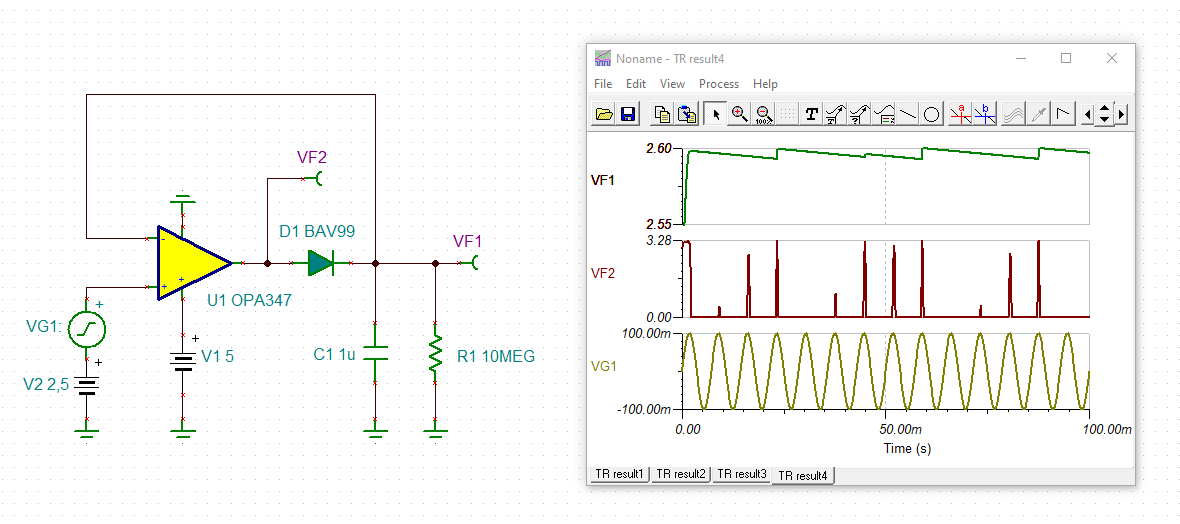I have designed and simulated a circuit that takes very small sinusoidal signals from a Micro Sensor to an IN AMP (AD8226, Single Supply, 0-5V) and gives a single sine wave output on a +2.5V reference. I then filter and amplify this signal and when I come to convert to DC with a peak detector I get the detection of my signal very quickly but it decays very slowly over a second or two, reducing the capacitance gives an unwanted saw tooth output so there is a trade off here.
Also the bandwidth of this part of the circuit throws my nice response out of the window.
Are there better ways of doing this so I get a quick and smooth response and a quick decay when the signal is removed, taking in mind that my PCB is very small.
The circuit is provided to simulate in Tina-Ti. I have omitted the filtering for a simpler circuit.







